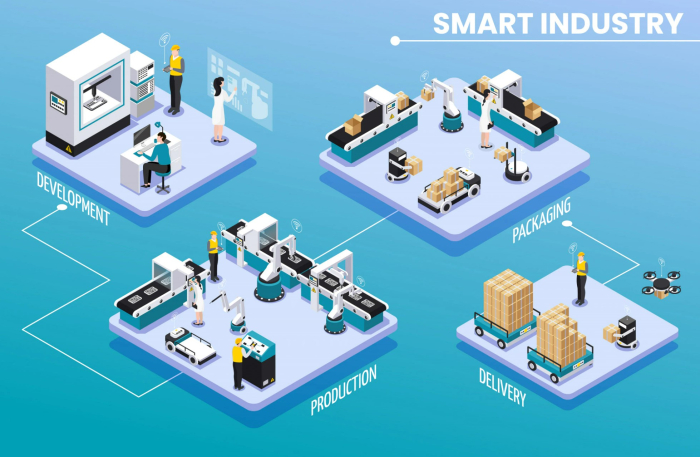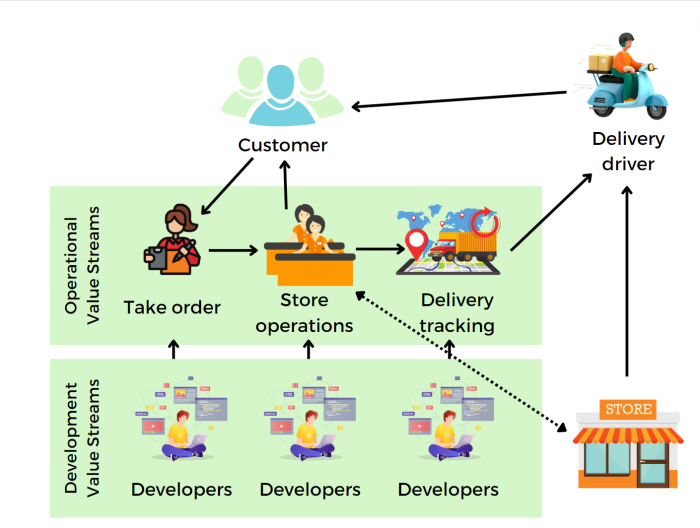
 Data Structure
Data Structure Networking
Networking RDBMS
RDBMS Operating System
Operating System Java
Java MS Excel
MS Excel iOS
iOS HTML
HTML CSS
CSS Android
Android Python
Python C Programming
C Programming C++
C++ C#
C# MongoDB
MongoDB MySQL
MySQL Javascript
Javascript PHP
PHP
- Selected Reading
- UPSC IAS Exams Notes
- Developer's Best Practices
- Questions and Answers
- Effective Resume Writing
- HR Interview Questions
- Computer Glossary
- Who is Who
Waste Mapping in Lean Manufacturing
Lean project management is geared towards identifying and reducing waste in the production process. This is done by following different guidelines for waste identification, which are much more prominent when you're making things with your own time.
Waste in Lean Manufacturing

As described by agile practitioners, here are seven forms of waste that can be found in software development.
Partially Work Done
When you start work on a project but leave it without completing it, you might be leaving some resources not only untapped but also wasting them. Resources in the form of code completed but not tested, specs written but waiting for development, designs that have finished but are waiting for implementation, and so on.
Additional Processes
At each stage of a project, there are extra processes that ultimately don't add any value to the customer. For example, documentation that's never referred to or processes waiting for approval that isn't needed at all.
Additional Features
Any software with features not needed or will never be used. An example of extra features is included when the agile team tries to include features just for technical coolness and not user-friendliness.
Task Switches
Managers must pay closer attention to the context switching their employees are doing in order to avoid needless overhead costs associated with getting back to the original task. It's important that managers understand how much time an employee is spending switching between tasks. That way, they can assign them to just one project while they work on that one task and ensure more progress is made.
Waiting Time
It's best to avoid wasting time which is why it's important to keep up with the right people and be able to execute without waiting on others. We would say this is a situation where there are dependencies, but not meeting deadlines or waiting for responses calls for a waste of time that has been prevented by maintaining an open communication line.
Motion Time
The effort that is required in order to move items from one location to the other results in waste. This commonly happens in distributed teams as each person must pass on responsibility.
Defects
When it comes to projects, new bugs can always crop up. A lack of project-specific specifications is another example of an element that could cause problems. In the end, systems of work, such as requirements or software bugs and so on, are all sources of possible waste in a project's success.
Value Streams
A value stream is an organization's activities in providing value to the customer, from when a customer first contacts your company all the way down to how that customer recognizes your efforts.
Disciplined Agile focuses on three types of value streams: Continuous Improvement, Innovation, and Diversification.
The Development value stream creates, plans, and manages all aspects of your development team. It covers the decision-making process, communication, project management, and finances.
The customer experience is a key measurement of market share. Marketers, sales, and operations should all understand the value stream that goes into delivering customer satisfaction. The customer experience directly corresponds with one's operational value stream.
Figure 1 displays the various value streams in a pizza company. It's important that a company first makes sure the operational value stream begins with customer satisfaction and ends with delivering the right product to customers. It includes taking the order, operating at a store, and tracking the delivery. In the development value streams, we have three different development teams that deploy order management, operate at a store, and follow up on delivery tracking systems.

Mapping Value Stream
Expanding the operational value stream includes improving the system, and reducing the total time from the beginning to the end of the entire stream. This will allow for improvements now, and not at an expense of future development.
All You Need To Do Is Apply The Three Steps
Be clear about what you want to ask. We have questions that include
Why do we exist?
What are we doing now? In this case, the answer is "the current state." This is what your business does. What's its flow of value, and how do customers benefit from it?
Where is there waste and how can we eliminate it from our workflow?
This Can Be Done Using a Value Stream Map
Take your time and plan for the step-by-step approach.
When you notice issues within a process, use the DA Browser. It can help you visualize the existing process and identify areas that could be changed to improve efficiency.
When there are areas for improvement in your processes, you can start using Guided Continuous Improvement to identify these. The DA browser will enable you to keep conversations and analysis going with Wicked Problem Solving.
Create a prioritized to-do list with one improvement from each category.
Analyze the backlog for what can be improved, then execute and deliver them in order to deliver the proposed improvements. Don't stop after analysis.
Keep on improving.
The Multi-Step Process Will Help You Reach Your Full Potential
You can start with a current state value stream map, but it's more helpful and practical in knowledge work, to begin with an idealized development value stream or one of the many other development value stream patterns that are available-adjust, map it to our context, and then you can use them to have conversations.
The goal of value stream mapping is to identify your pain points and find ways to eliminate them. With this approach, you can identify your strongest areas and focus on the "vital few" while leaving the other 80% to other initiatives.
You want to focus on the delays, waste, and other challenges within your workflow. This includes waiting, multi-tasking, overloaded people, reworking tasks, or finding the correct resource you need to get work done. This often leads to late detection of problems and poor quality. You want to make sure that you're delivering high-quality work in a timely fashion every time.
What Are The Goals of Agile?
Lean thinking is a system of principles in which the company tries to eliminate wasteful or unnecessary activities. It involves never-ending efforts to improve upon productivity and decrease "Muda" (Japanese for waste).
To ensure your business is efficient, you must call the kinds of waste that don't add value to your customers' lives.
Make learning a challenge. You can do this by introducing quizzes and expanding your knowledge outside of your current skill set.
Getting feedback is crucial in order to make sure your project is headed in the right direction. There are many ways you can get quick feedback and make adjustments if needed. It includes pairing with customers over short feedback sessions, using small iteration cycles, and regularly performing refactoring and integration testing.
For software, any decisions made should be based on facts and not predictions. The sooner you make a decision, the less risk is involved - since it's happening at the start of the project, with no referential momentum. The downside with delayed decisions is that there's a lot more risk involved for the business.
Since time is irreplaceable and can make or break a project, speed is crucial. Pick a delivery timeline that works for your business, so you can deliver an end product without major flaws as soon as possible and keep the feedback flowing in the next iteration.
One of the big ways a team can be underutilized is when it's artificially organized by management who have little knowledge of customer requirements, the personalities of their employees, or what the needs of the project actually are. In short: too- strict timelines, rigid structures and lack of ownership of each other in a development environment can lead to big problems for some companies. Luckily, agile development leads to team empowerment, with clear teams and clear roles assigned by management.
Customers should be able to talk to developers easily, and they should have access to all the information they need. It's important to remember that customer experience is the key. We want the customer to feel like they're interacting with a human, not just a machine.

